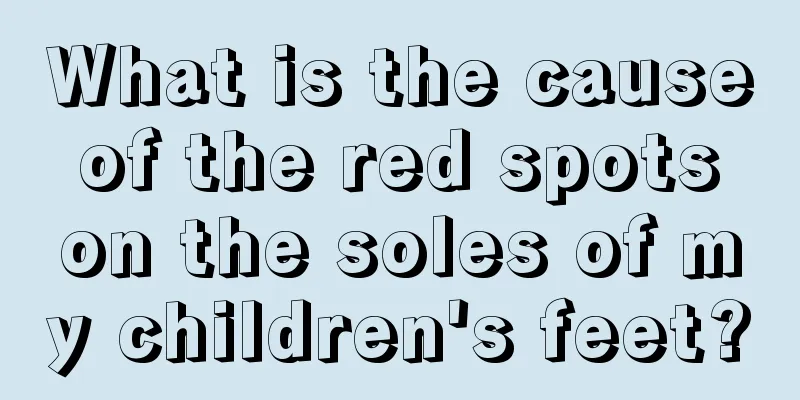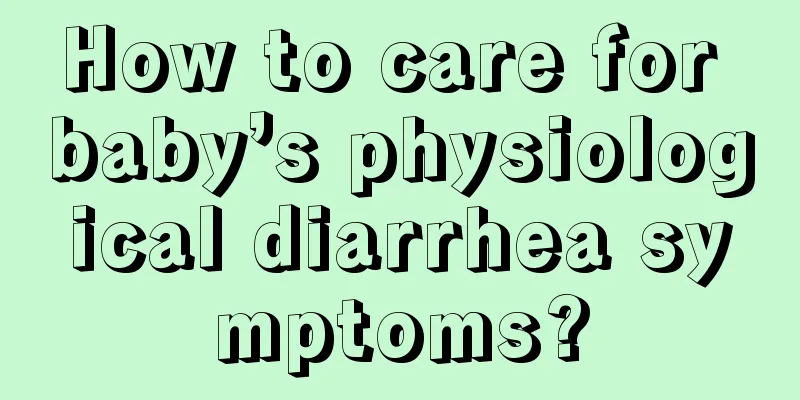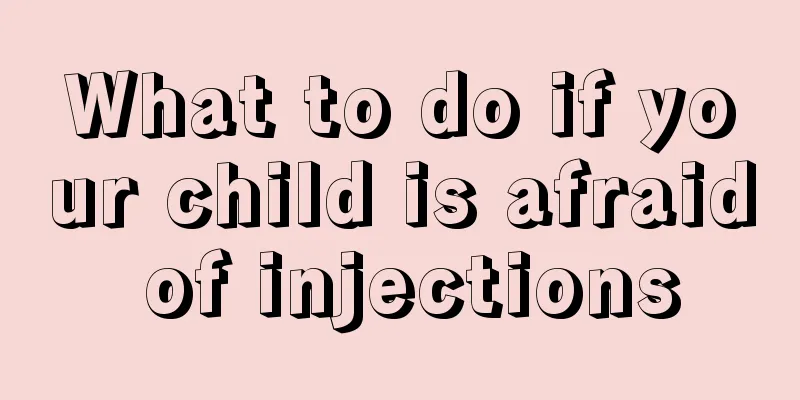What is the cause of the red spots on the soles of my children's feet?

|
The amount of exercise done by the feet is very large every day. Whether it is an adult or a child, if there is an abnormality in the feet, it will seriously affect everyone's normal life. Especially when some children have red spots and itching on the soles of their feet, parents must pay attention to it and go to a regular hospital for examination in time to facilitate active treatment, otherwise it will easily lead to a serious condition. So what is the matter with the red spots and itching on the soles of children's feet? First, what's the matter with the itchy red spots on the soles of children's feet? Red and itchy spots on the soles of children's feet may be eczema caused by allergies. If the child has an allergic constitution, desensitization treatment should be carried out after identifying the allergens. If your child has itchy red spots on the soles of his feet, it may be caused by a fungal infection, blister-type tinea pedis, also known as tinea pedis. It is best to go to a dermatologist for a check-up and receive treatment only after a confirmed diagnosis to avoid delaying the condition. Second, the red itchy spots on the soles of children's feet may be hand, foot and mouth disease If you are at the peak of the disease, you should not be too careless. Once a child is found to be infected with hand, foot and mouth disease, he or she should seek medical attention promptly and avoid contact with the outside world. He or she generally needs to be isolated for 2 weeks. Items used by children should be thoroughly disinfected. They can be soaked in chlorine-containing disinfectant. Items that are not suitable for soaking can be exposed to sunlight. 1. Ventilation of the room The air in the child's room should be fresh and the temperature should be appropriate. Windows should be opened regularly for ventilation and the air should be disinfected daily. There should be no too many people in the room, smoking is prohibited, and the air should be prevented from being polluted and causing secondary infection. 2. Drink more warm waterThe child should rest in bed and drink plenty of warm water within a week. The child had a poor appetite and was unwilling to eat due to fever and oral herpes. The diet should be light, delicious and easy to digest. If there is oral erosion, you can eat some liquid food. Avoid eating cold, spicy, salty and other irritating foods. 3. Oral hygiene The oral cavity should be kept clean to prevent secondary bacterial infection, and the mouth should be rinsed with warm water after each meal. When there is erosion in the mouth, you can apply chloramphenicol or cod liver oil to relieve pain and promote early healing of the erosion. 4. Clean clothes The child's clothes and bedding should be clean. Clothing should be loose, soft and changed frequently. The bed should be flat and dry. Cut the child's nails short and wrap his or her hands if necessary to prevent scratching the rash. What's wrong with the itchy red spots on the soles of children's feet? The itchy red spots on the soles of children's feet may be dyshidrotic eczema, a sweating disorder caused by allergies. It is a recurrent disease occurring in the palms and fingers (toes), accompanied by varying degrees of burning and itching. |
<<: What medicine should children take for mumps?
>>: What causes a child's face to turn yellow?
Recommend
What are the symptoms of zinc deficiency in babies?
The reason why each disease is different is that ...
Tuberculosis in children
Diseases such as childhood tuberculosis are actua...
Can children's scalp pityriasis heal on its own?
Many children will suffer from pityriasis capitis...
How to prevent children from having a fever and seizures?
The phenomenon of high fever convulsions in child...
Characteristics of children's shoes. Parents should buy shoes for their children from a scientific perspective.
As the saying goes, "Although the sparrow is...
Acne on the child's face
Many people think that only boys and girls enteri...
What is the reason for repeated coughing in children?
We are all familiar with the problem of bad breat...
Reasons why babies have heavy breathing sounds when sleeping
Many mothers will find that their babies breathe ...
What should I do if my child's permanent teeth are loose?
When a child is about twelve or thirteen years ol...
What are the disadvantages of children drinking milk before bed?
In daily life, many parents let their children dr...
What are the symptoms of neonatal hemangioma?
Many newborn babies will have hemangioma, a benig...
What happens if my baby’s skin becomes darker?
After the baby is born, as time goes by, the skin...
The baby's forehead is hot but not the body
Babies have poor body resistance and may have a f...
What should I do if my child has a runny nose due to a cold?
Because babies' body functions are not fully ...
Reasons for spitting up in four-month-old babies
It is a common phenomenon for 4-month-old babies ...









